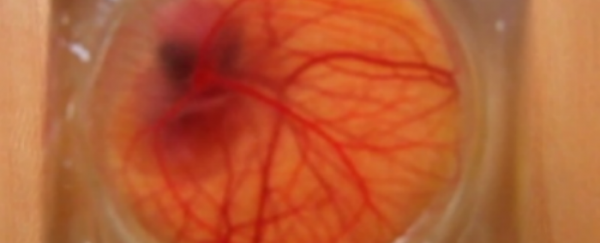In an effort to make scientific research cheaper and easier, an array of 'on-a-chip' technologies have been developed over the past few years. The idea is to use stem cells to build a miniature replica of a real-life human organ so you can observe its reactions to as many new drugs and treatments as you like. The benefit is these little organs-on-a-chip offer a much more accurate view of how real human organs might respond to these treatments than testing them on lab animals would - and they do it much more cheaply, and humanely.
With this idea in mind, scientists in the Department of Biomedical Engineering at Tsinghua University in Beijing, China have developed what is, essentially, an egg-on-a-chip. Made from a transparent layer of olydimethylsiloxane (PDMS), which is a widely used silicon-based organic polymer, the artificial eggshell is soft, and mimics the shape of a real egg.
"Unlike its ancestor - the conventional 'lab-on-a-chip', which is basically chemically based - the current 'egg-on-a-chip', intrinsically inherited with biological natures, opens a way to integrate biological parts or whole systems in a miniature-sized device," the team writes in the journal Science China Technological Sciences.
This gives scientists an unprecedented view inside an egg, so they can observe how an organism lives, grows, and develops in the earliest stages of life, without having to subject its home to the rather crude technique of 'windowing' that's currently used in labs. You can watch the process here, it's basically just cutting a hole in the eggshell and leaving a window that can be opened and closed at will.
The researchers have so far been able to culture avian embryos in their artificial egg structures for just over 17 days - about three days before they would be expected to hatch. They're hoping one of the practical applications for their new transparent eggs is to allow for blood and other types of organic fluids to be injected inside for early diagnosis, and rare gene variations to be cultured inside.
It might seem a little 'icky' to create an artificial embryo home, but scientists rely on these studies to better understand fundamental biological processes, such as the development of the central and peripheral nervous systems. This way, at least they don't have to poke a giant hole in the side of the eggshell to see what's going on inside.
Source: The Washington Post
